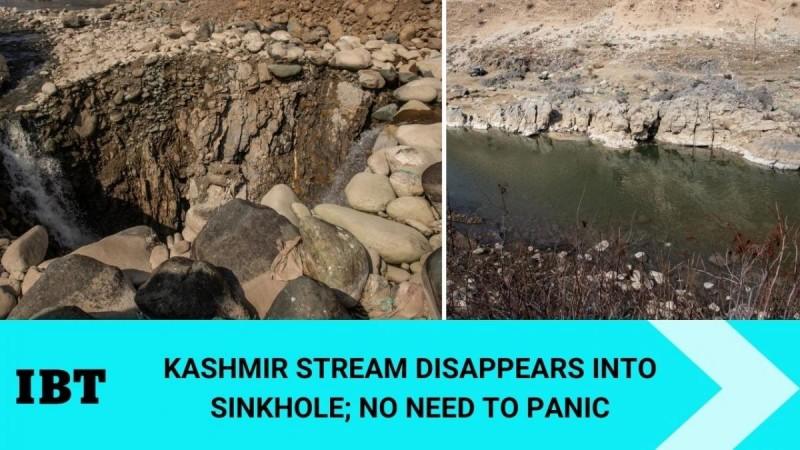A famous Kashmir trout stream has vanished into a sinkhole spreading fear in the south Kashmir Kokernag area. The famous Brengi stream in the Kokernag area of Anantnag district has been draining into a sinkhole leaving the rest of the stream dry during the last two days. Brengi stream is one of the most famous trout angling streams which is sought after by anglers for its brown trout species.
Last week, a huge sinkhole developed in the stream which has been draining all the run of the stream water into it. This has left the downstream portion dry killing trout fish in large numbers. District authorities said around 50 cusecs of water was draining into the sinkhole at the moment. It must be recalled that in winter all the streams and rivers in the Valley have minimum discharge.

Authorities have imposed section 144 CrPc in the area to prevent people going closer to the sinkhole since scores of locals have been visiting the place to see the disturbing sight.
Experts weigh in on sinkhole mystery
Panic struck locals when the sinkhole drained the Brengi stream. Many self-proclaimed experts believed the sinkhole is a result of climate change's impact on the mighty Himalayas and in Kashmir.
"It may cause a collapse of land due to denudations and it is also a threat to our homes and lives. It is a mystery for us where the water from the stream goes. The outlet of water is still unknown but we are worried our homes may collapse, nearby villages may sink. The government should do something as soon as possible. We are living in fear," one of the local resident told India Today, describing the pulse of the locals.
But the panic is uncalled for. Experts believe the sinkhole to be a natural phenomenon, which is caused due to the dissolution of limestone rocks under the waterbed.
![[Representational image] Sind River](https://data1.ibtimes.co.in/en/full/769695/sind-river.jpg?h=450&l=50&t=40)
Dr Piyush Singla, IAS, DC Anantnag, further explained the phenomenon and the actions being taken by the administration in this event. Immediate mitigation measures have been initiated and efforts to understand the scientific cause of the event and resolutions are initiated. Singla reaffirmed that sinkholes are naturally occurring geological events and pose no immediate danger.
Four technical teams each from National Institute of Technology, Srinagar headed by Director, NIT; Department of Earth Sciences KU headed by HoD Prof Geelani, a team of Fisheries department and a team from Geology and mining visited the spot and conducted technical tests including using a Proton Precession Magnetometer (PPM) were utilized to understand the event.
It has been observed that the underlying rock formation in the area is soluble limestone (Triassic limestone). Dissolution over long periods creates cavities in the rocks and these may cave in gradually or suddenly, which is what has happened at Wandevalgam in Kokernag subdivision of Anantnag district.
"It is in place to mention that wide distribution of carbonate rocks in south Kashmir is well documented and the dissolution of these carbonate rocks can create various karstic features like swallow holes, sinkholes, conduits, shafts, caves, etc. and the same is no cause of panic and worry," Singla explained.
It is recommended that mapping of karst cavernous / cave network systems in Anantnag be carried out to create a vulnerability profile of the district, which will serve as a guiding framework for physical infrastructure development, he added.
For immediate intervention, necessary measures are being taken to fill the sinkhole and create of another diversion in consultation with technical and engineering experts soon.

















